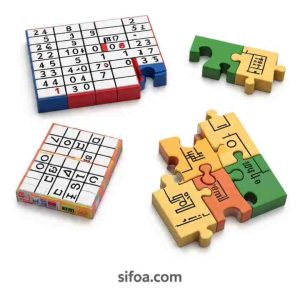Why Critical Thinking Matters
Top Critical Thinking Exercises to Sharpen Your Mind

- Pose a thought provoking “What If” question, such as, “What if you were tasked with solving world hunger in one year?” or “What if social media disappeared overnight?”
- Encourage participants to brainstorm possible outcomes, considering both positive and negative consequences.
- Ask follow up questions like, “What evidence supports your solution?” or “What are the potential risks?”
Why It Works: This exercise encourages participants to think beyond the obvious, explore multiple perspectives, and evaluate the feasibility of their ideas. It fosters creativity while grounding discussions in logical reasoning.
How It Works:
- Select a topic or statement, such as “Technology improves quality of life.”
- Use the Socratic method by asking a series of open-ended questions to challenge assumptions:
- Why do you believe this statement is true?
- Can you provide evidence to support your view?
- What might be an alternative perspective?
- Encourage participants to reflect on their answers and refine their reasoning.
Why It Works: This method promotes self-reflection and helps individuals uncover biases or gaps in their knowledge. It’s an excellent tool for classrooms, book clubs, or professional development workshops.
How It Works:
- Based on Edward de Bono’s Six Thinking Hats method, assign different “hats” to participants, each representing a unique perspective:
- White Hat: Facts and data
- Red Hat: Emotions and intuition
- Black Hat: Critical judgment
- Yellow Hat: Optimism and benefits
- Green Hat: Creativity and new ideas
- Blue Hat: Process and organization
- Present a problem (e.g., “Should schools switch to virtual learning?”) and have participants analyze it from their assigned perspective.
Why It Works: This exercise encourages collaboration and diverse thinking, helping participants understand the complexity of issues. It’s ideal for team-building or classroom settings.
4. The 5 Whys Technique
How It Works:
- Present a problem, such as “Why is the team missing deadlines?”
- Ask “Why?” five times, digging deeper with each response to uncover the underlying cause.
- Example:
- Why are we missing deadlines? Because tasks are not completed on time.
- Why are tasks not completed on time? Because team members are overwhelmed.
- Continue until the root cause is identified (e.g., lack of clear task prioritization).
Why It Works: This exercise teaches participants to move beyond surface-level issues and address core problems, fostering analytical thinking and problem-solving skills.
5. Brain Teasers and Logic Puzzles
How It Works:
- Provide participants with brain teasers or logic puzzles, such as riddles, Sudoku, or lateral thinking scenarios (e.g., “A man walks into a bar and asks for a glass of water. The bartender pulls out a gun. Why?”).
- Encourage participants to explain their reasoning as they solve the puzzle.

Why It Works: Puzzles are fun, engaging, and stimulate cognitive processes like deduction, inference, and pattern recognition. They’re suitable for all ages and can be scaled in difficulty.
How It Works:
- Divide participants into teams and assign them opposing sides of a neutral topic, such as “Should schools have longer recesses?” or “Is it better to work from home or in an office?”

- Each team researches their position, presents their argument, and responds to counterarguments.
- Encourage respectful dialogue and evidence-based reasoning.
Why It Works: Debates improve research skills, public speaking, and the ability to evaluate opposing viewpoints, fostering intellectual flexibility.
How It Works:
- Provide a central idea or problem (e.g., “How can we reduce household waste?”).
- Participants create a mind map, starting with the central idea and branching out to related concepts, solutions, or challenges.
- Discuss the connections and prioritize actionable ideas.
Why It Works: Mind mapping encourages visual thinking and helps participants see relationships between ideas, making it a versatile tool for brainstorming and planning.
Tips for Implementing Critical Thinking Exercises
- Tailor to Your Audience: Adjust the complexity of exercises based on age, skill level, or context (e.g., simpler puzzles for kids, complex scenarios for professionals).
- Encourage Collaboration: Group activities foster diverse perspectives and teamwork, enhancing the learning experience.
- Reflect and Discuss: After each exercise, hold a debrief session to discuss what participants learned and how they can apply it in real life.
- Make It Fun: Incorporate gamification elements, such as points or rewards, to keep participants engaged.
- Stay Consistent: Regular practice is the key to developing critical thinking skills, so incorporate these exercises into daily or weekly routines.
SEE ALSO:
Conclusion
Critical thinking exercises are a powerful way to enhance cognitive skills, foster creativity, and improve decision making. By incorporating activities like the “What If” game, Socratic questioning, or mind mapping, individuals and groups can develop sharper analytical abilities in a fun and engaging way. These exercises are versatile, suitable for all ages, and can be applied in educational, professional, or personal settings.